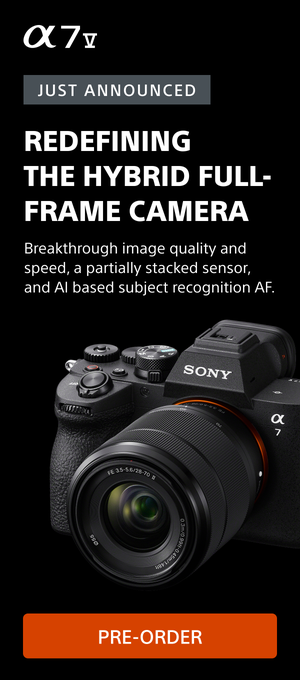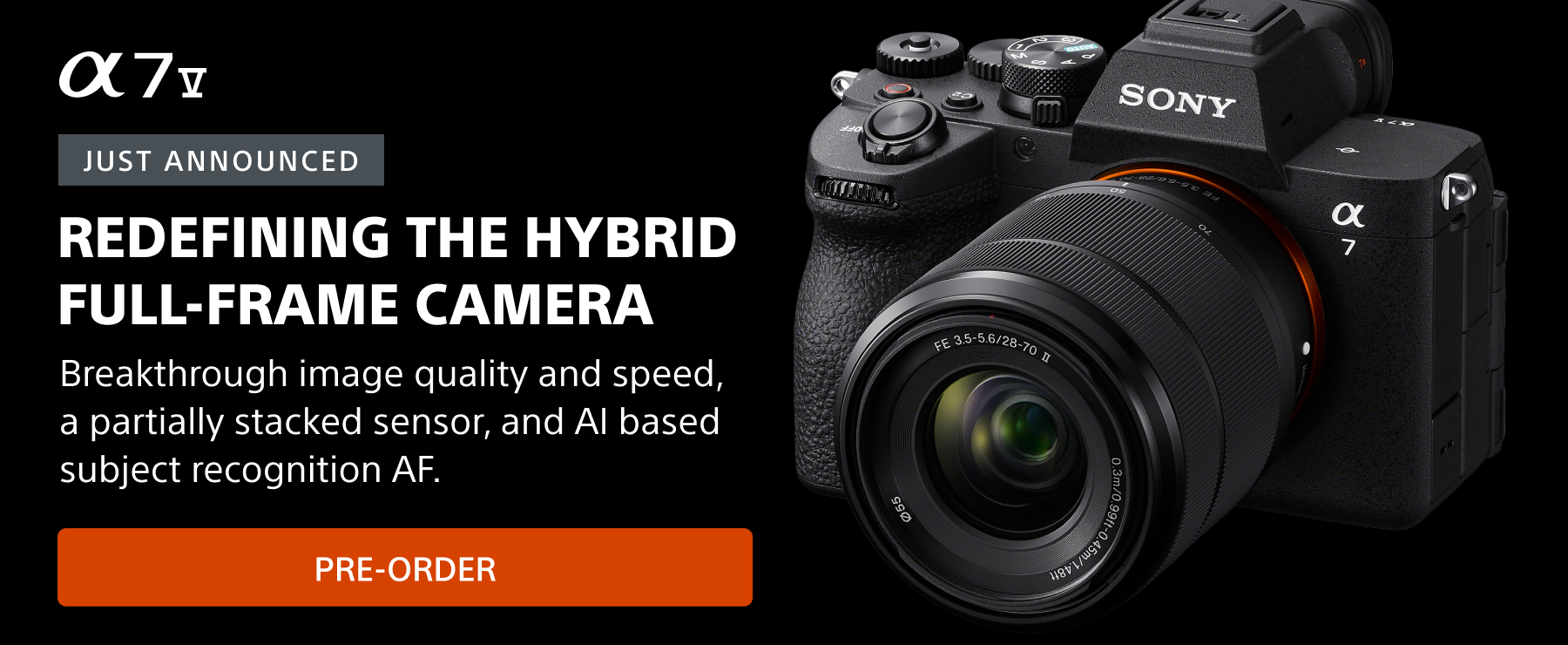Do you know the classic three light portrait lighting technique? If you’re getting into studio portraiture and you’re struggling to find out how to light your subjects – this is the video for you. Watch the lighting tutorial below as pro portrait photographer, content creator and Sony Artisan Miguel Quiles discusses his three light setup for studio portraits. See more videos like this one on the Alpha Universe YouTube Channel.
Camera & Lens Combination
For this portrait shoot, Quiles is using the Sony Alpha 7R V camera. “This is my workhorse camera for studio portraiture – high-resolution, amazing autofocus.”
He has the camera paired with the Sony 50mm f/1.4 G Master, a lens he says he doesn’t typically use for portraiture but for this environment the 50mm focal length works beautifully. “It’s insanely sharp. Once again the autofocus and the motors on this lens keep up with the body which is incredibly important.”
Another piece of his setup to add a little something extra to this shot is a Tiffen Hollywood Star Filter. The filter will turn any lights in the image, whether it be a light source or the shining sequins on the model’s dress, into more of a star trail look instead of points.
The Main Light
The main light Quiles is using is called the Nanlite Forza 720. This light is going to do the bulk of the heavy lifting during the portrait shoot. “It’s an LED light, continuous light. It’s set to 5600 Kelvin. I’ve got it going through a double-diffused softbox, which means that you have a layer of diffusion inside the softbox, and you have one on the outside. This is a 90cm softbox.” He also has a grid fixed to his softbox so he can concentrate the light on his subject to get it looking good on her, and then he can light the background separately.
The Backlight
Next up are the backlights, which will give a kiss of light to the backdrop and provide some separation between the background and the subject. Quiles likes to use a Hobolite Avant light on one of their stands with another softbox and grid. “Because again, I want to control where the light is going,” he explains. I really just want to add this kind of like little hot spot on the background just so that we have a little pop between the subject and the background.”
Constant Light
Another light Quiles likes to use is a Hobolite Mini, which helps to create the star effect on the subject’s dress. “I’m going to have this basically just pointed at her dress so that it reflects off of her dress and we can see the little star patterns coming from the reflections from the light.”
These are all of the lights Quiles uses because he has them in his studio, but he says any constant light will work. “Just make sure that you have them all set to the same color temperature so that you can get the effect that you want.”
The Backdrop
The backdrop plays a major role in Quiles’ studio shoots, with this one in particular really driving home the style he’s going for. “This one is made by Intuition Backdrops and it’s got this kind of cool scene behind us with just kind of like a fine art type of backdrop. It’s got a nice little sweep. This is part of the X Drop System, so these are really nice because you could actually just pick up this entire backdrop and just move it if you were doing a photo shoot on location.”
Dialing In Your Settings
For this shoot, Quiles is shooting wide open at f/1.4 to give the image that dreamy blur to the background. He’s also shooting at 1/400-sec. and at ISO 100. “I set the ISO to whatever the lowest ISO is that I’m using because the way that I do my studio lighting. What I’ll end up doing is I use the lowest ISO to get the cleanest shot and then my lights, I’m going to dial those up to get the exposure that I’ve already dialed into my camera.”
Using the Electronic Viewfinder on the camera, Quiles checks to see if his main light set at 11% will be enough power to properly expose the image. When it’s not, he turns it up until the Electronic Viewfinder shows the subject properly exposed. “That’s one of the cool things with the Electronic Viewfinder with a mirrorless camera,” he explains, “especially when you’re using continuous light. What you see is what you get, so you’re basically just looking either through the EVF or looking at the monitor, you dial up that light until the main light looks great – and then you should be good.”
After dialing in the main light, Quiles moves on to the backlight. Because this light is lower powered than the main light, he has it at 100% brightness and also set to 5600 Kelvin. “You can see it’s basically just adding a little tiny kiss of light to the center of the backdrop. If I took the grid off, it would actually just light a lot of the backdrop. But I really want it to be a focused beam of light that’s just really hitting the center of this backdrop so we can have this kind of carving out effect.”
The third light, which for Quiles is the Hobolite Mini, is for adding light to the subject’s dress to get the star pattern that fits the style for the shoot. “One of the things you want to make sure of when you have the light in this kind of position,” he explains, “is that if this light was higher powered, had more of an output than your main light, it’s going to create what’s called monster lighting. You know, that campfire light where you have a flashlight under your face and it uplights you? You don’t want that. As long as this power level is lower than the power coming from your main light, you won’t have that monster lighting look.” To dial this in, Quiles looks at his subject and makes sure the shadows are still falling in the correct direction. Once everything is dialed in and he likes how it looks on camera, he can start shooting.
See more videos like this one on the Alpha Universe YouTube Channel.



